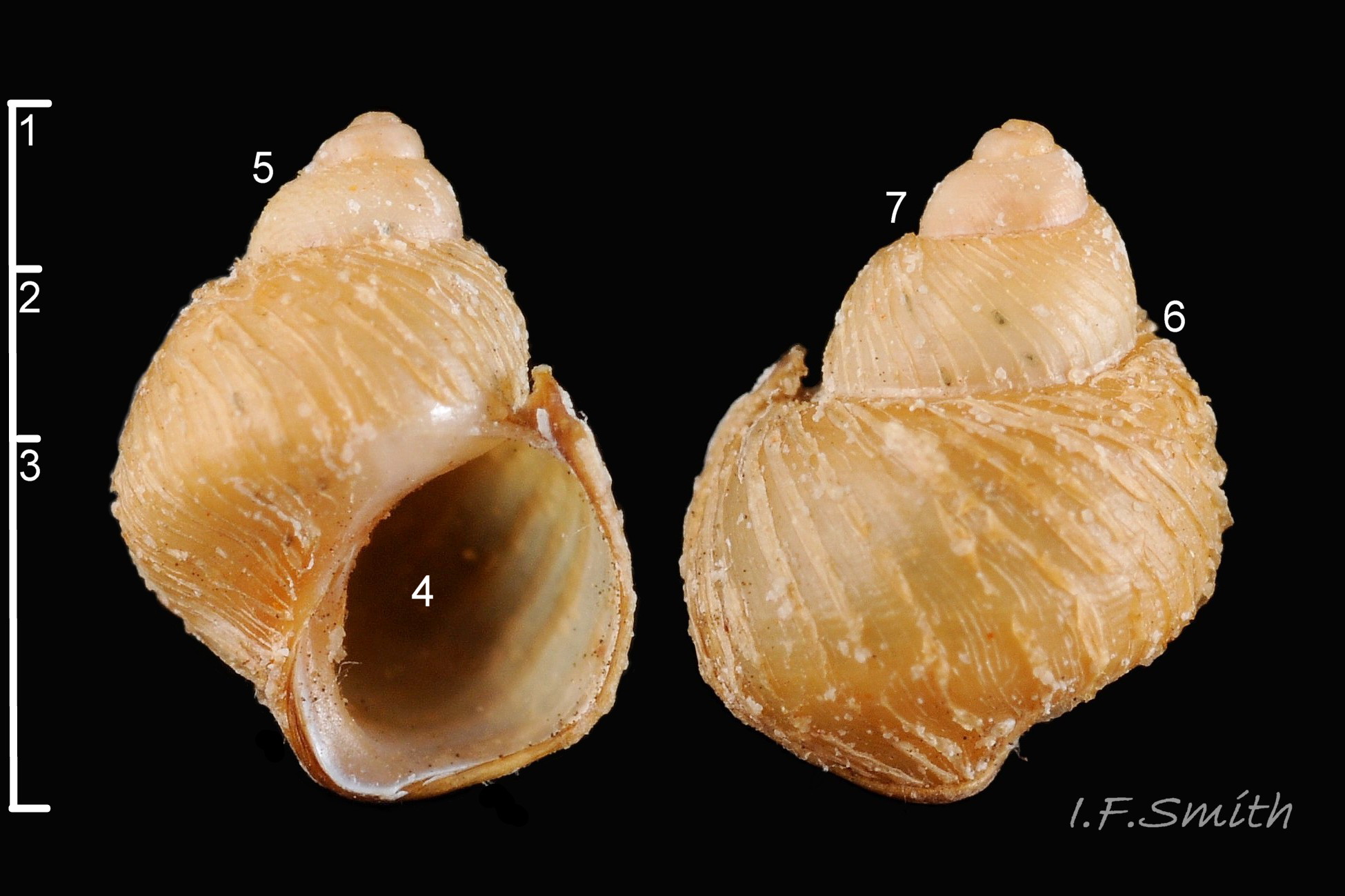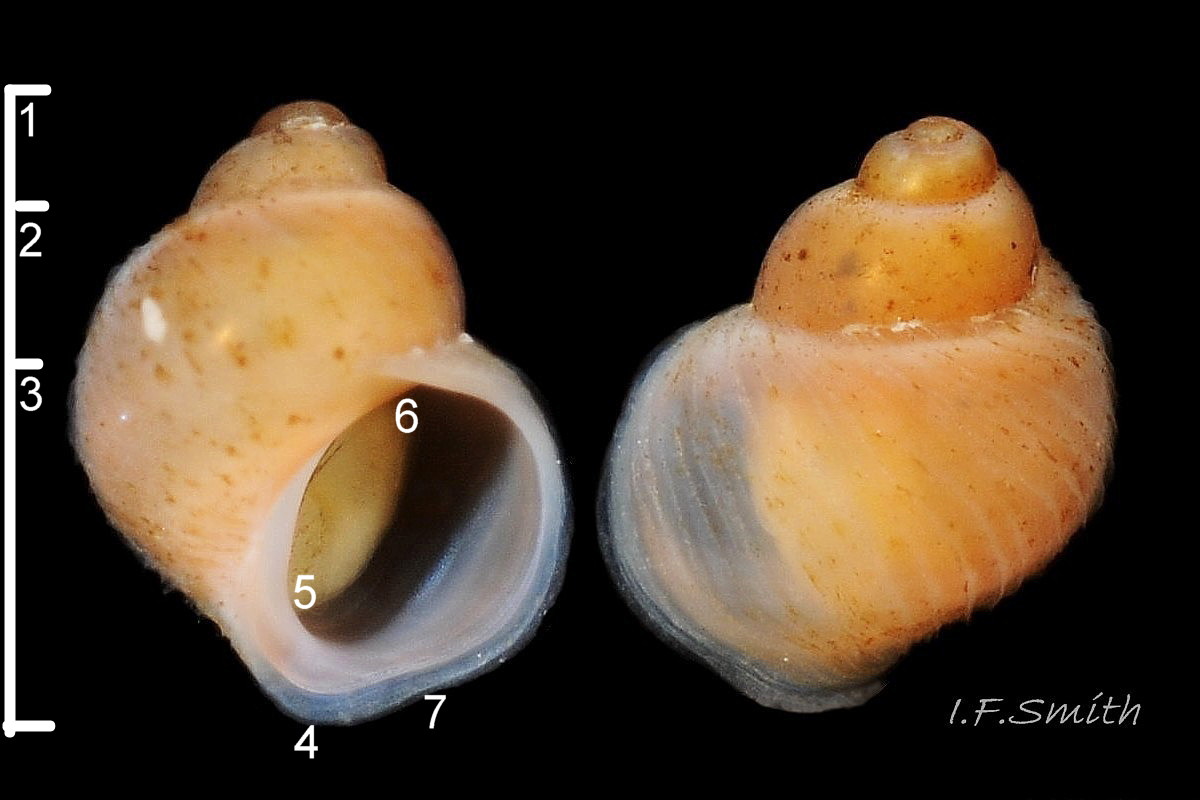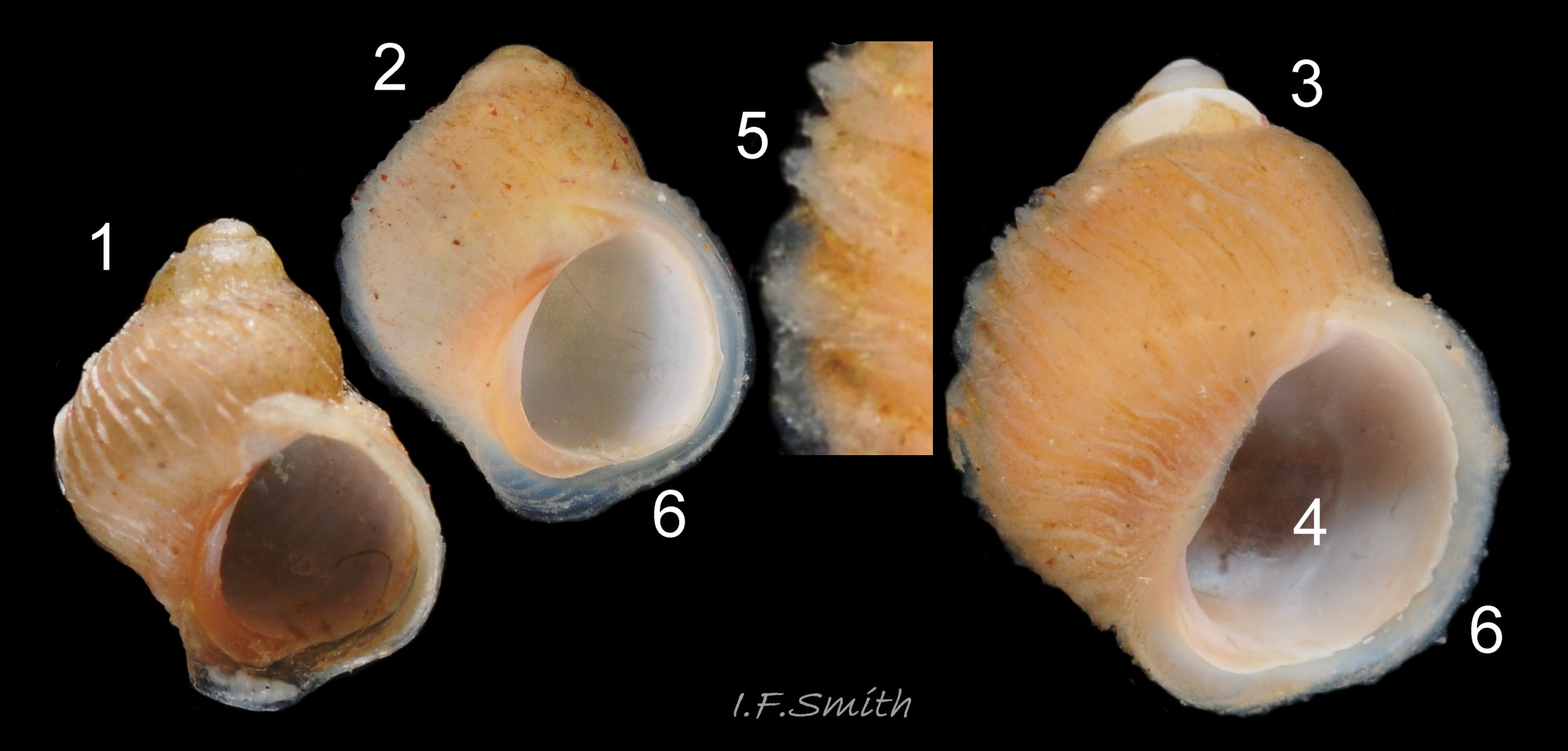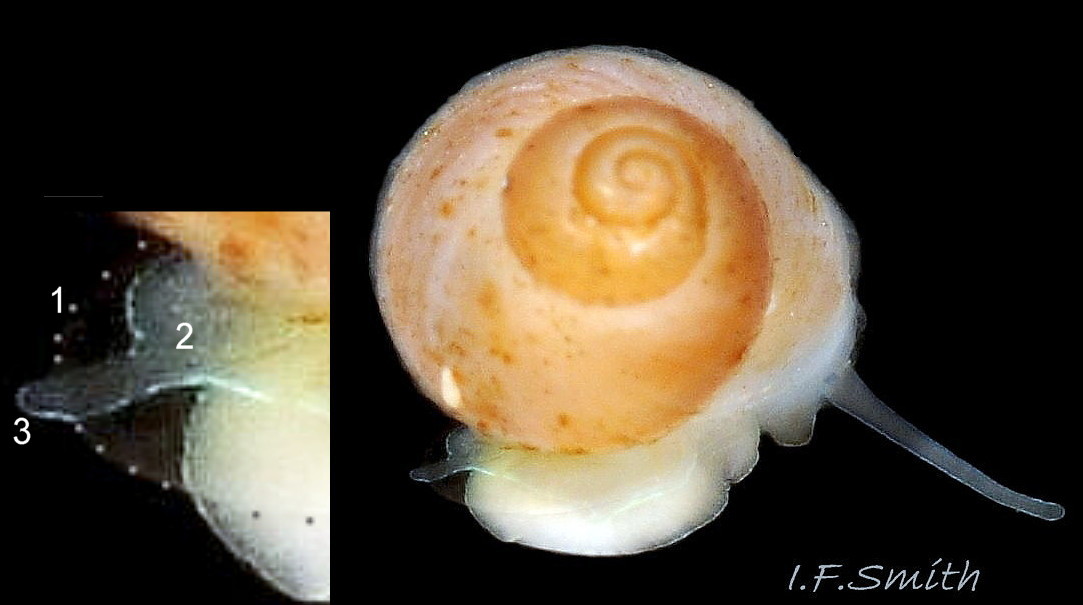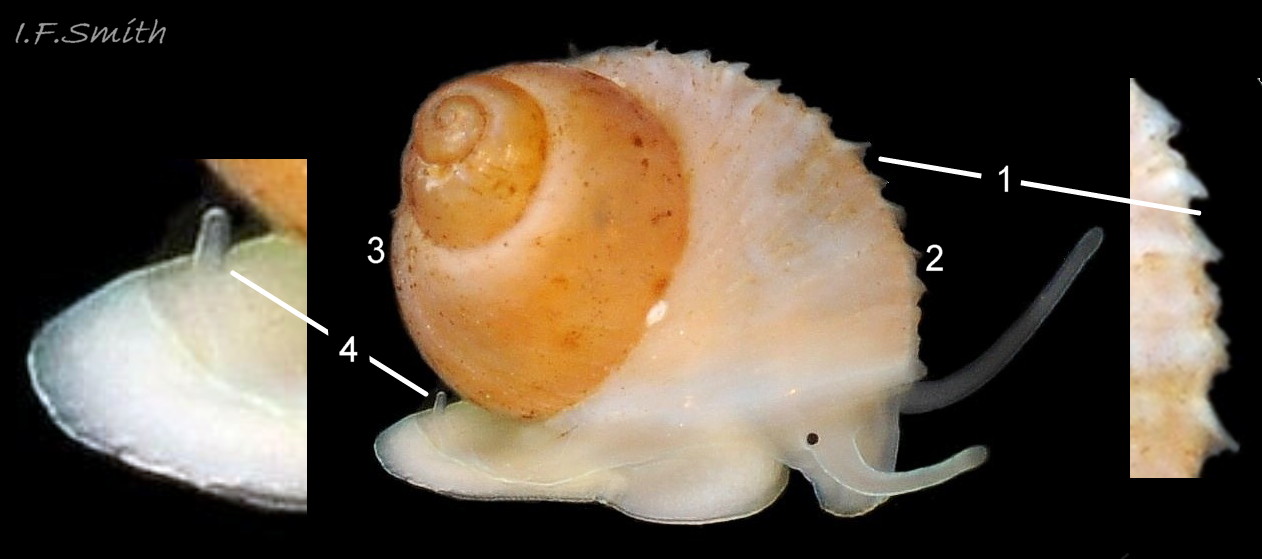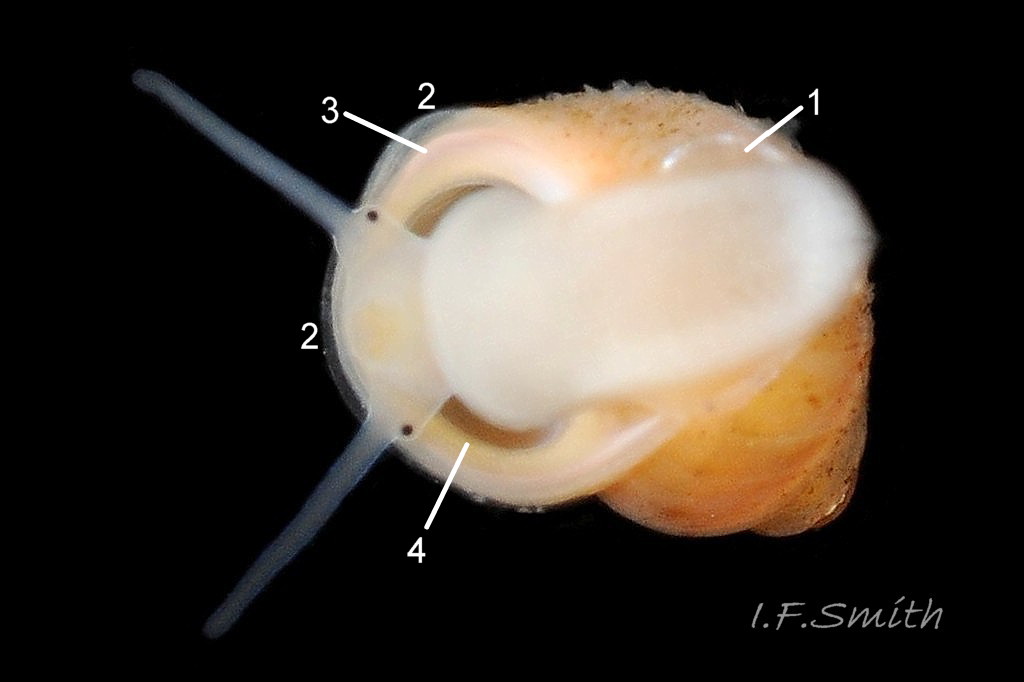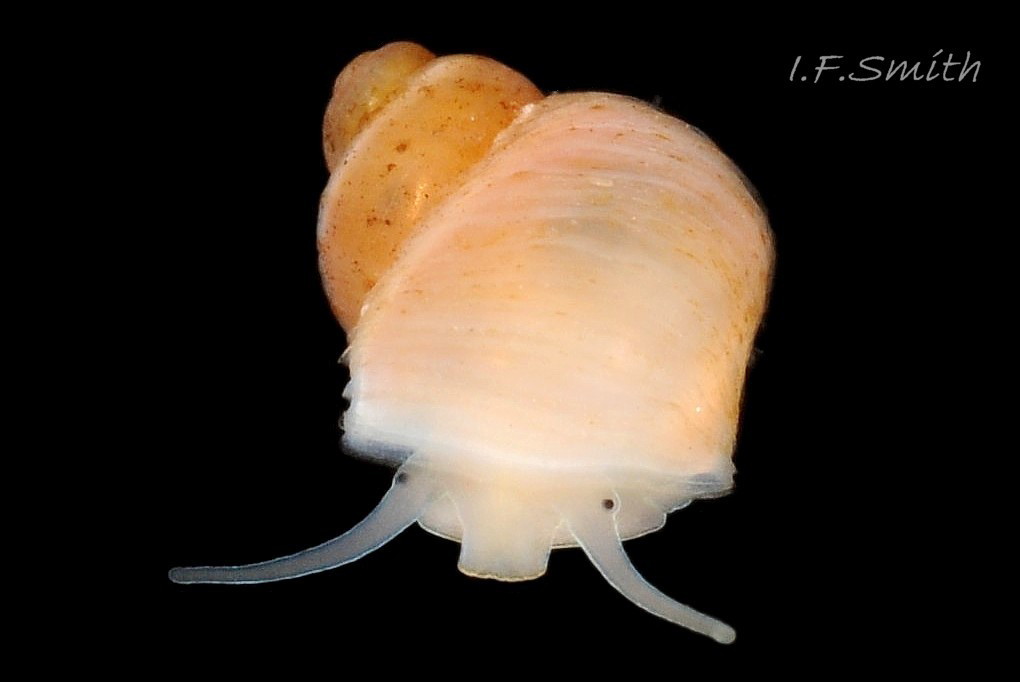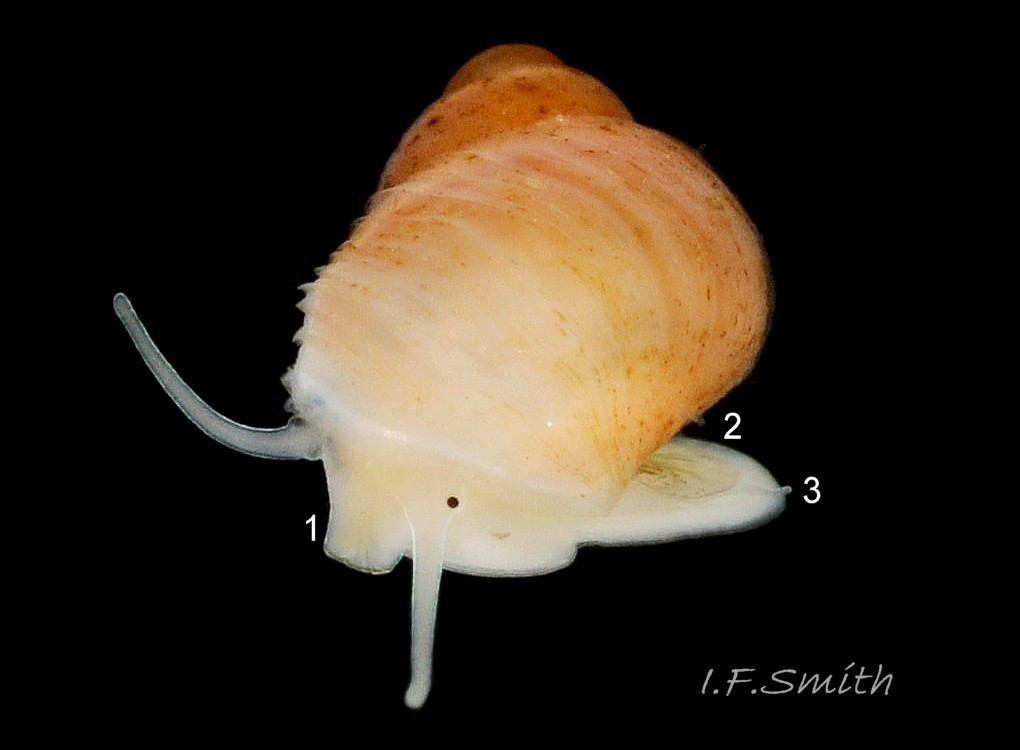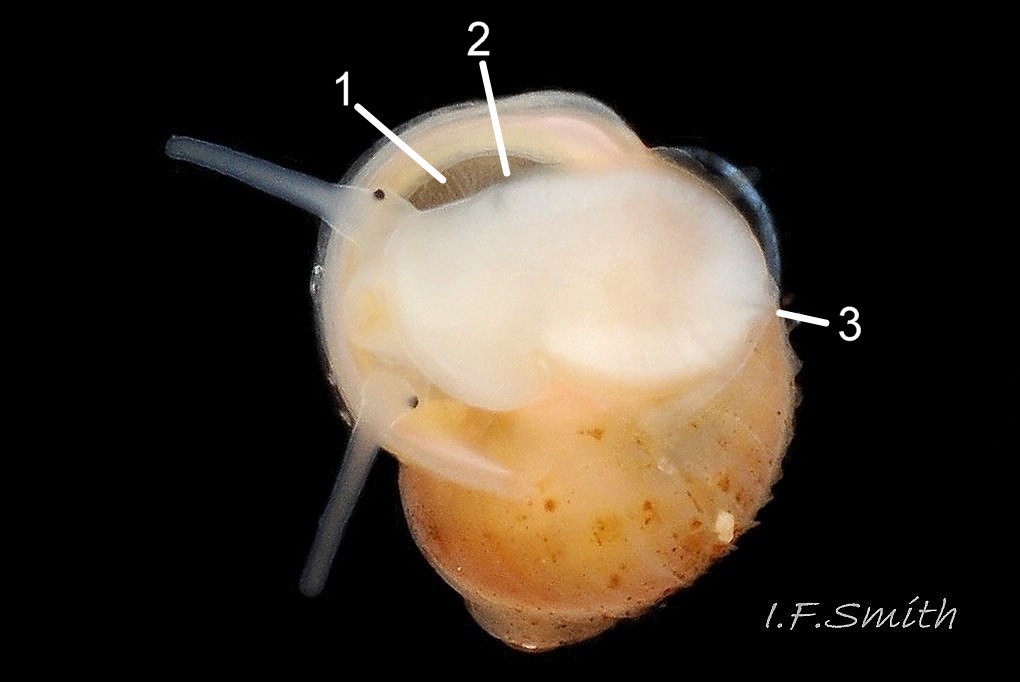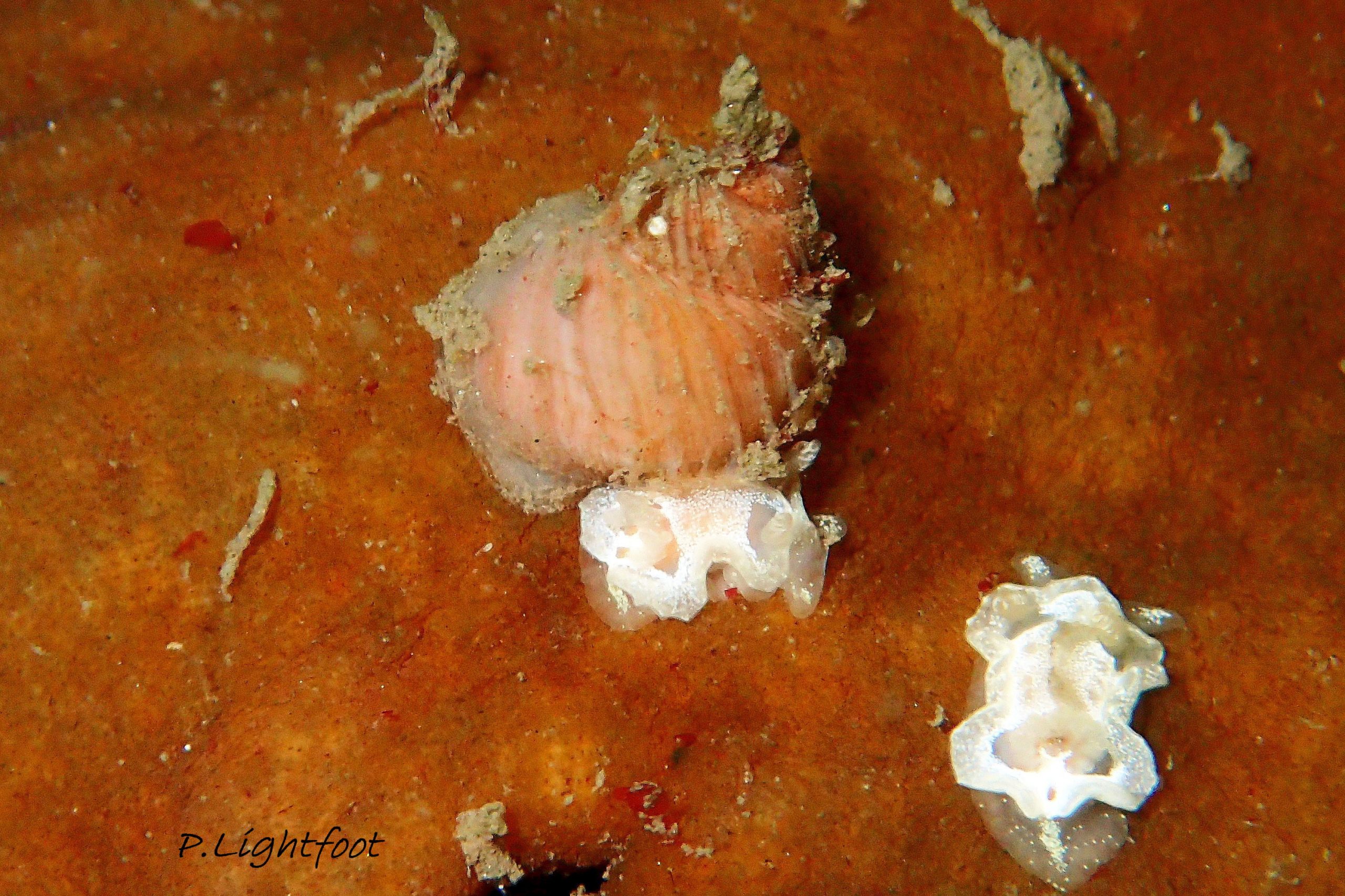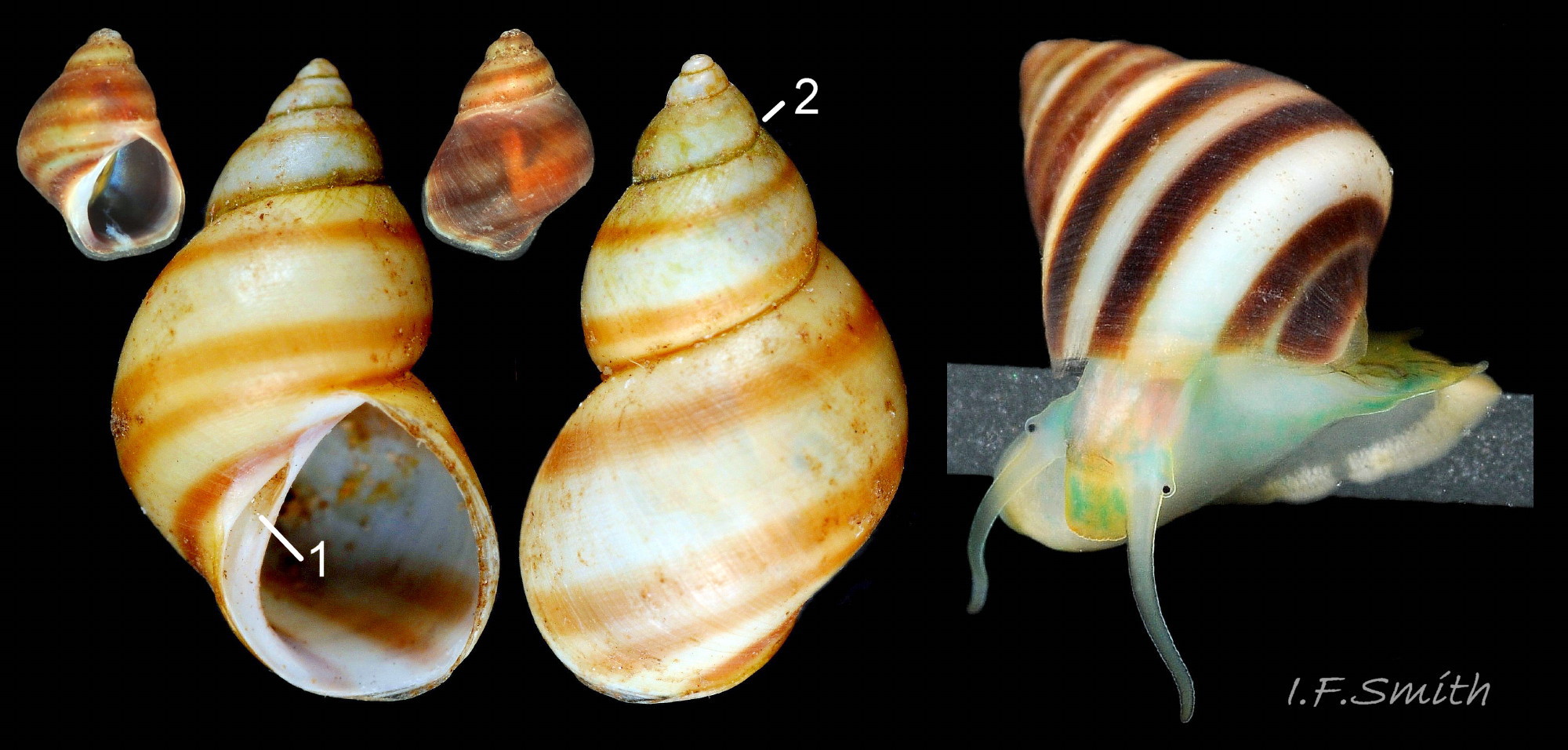Click image to enlarge with full caption. Main text below slider.
Lacuna crassior (Montagu, 1803)
PDF available: www.researchgate.net/publication/349896022_Lacuna_crassio…
Synonyms: Epheria crassior (Montagu, 1803);
Vernacular: Grote scheefhoren (Dutch).
Glossary below
Shell description
The adult shell is up to 14 mm high and 10 mm wide, with a tall spire, tumid whorls, deep sutures and a stepped profile (adult images L. Chianese at flic.kr/p/27NZVYG and M. Segalliquoc at flic.kr/p/Nf7oHo ). The apex is small and depressed, not sharp. The body whorl occupies about 75% of adult shell height, but juveniles have shorter spires so their body whorls are about 80% when 5.5 mm high 01 Lacuna crassior and 85% when 3 mm high shell 02 Lacuna crassior. Strandline shells, with periostracum worn off, are smooth with no sculpture apart from slight spiral ridges on the periphery of the body whorl of some specimens.
The aperture is large and slightly squarish, about 45% – 50% of adult shell height; about 53% of 3 mm high shell 02 Lacuna crassior. In apertural view images, the aperture occupies about 38% of the area of 5.5 mm high shell 01 Lacuna crassior. The palatal lip is semi-circular, with a slight angle at a short distance from the adapical angle, and a base drawn into a distinct spout 02 Lacuna crassior. The columellar lip is expanded into a broad, white shelf. A few specimens have a slight columellar groove or small chink-umbilicus, but most lack them. The adapical angle of the aperture is about 90° 02 Lacuna crassior.
The operculum is a pale yellow, ovoid, spiral 08 Lacuna crassior, so transparent as to be almost invisible 04 Lacuna crassior. Live, unworn shells are characterized by a thick, whitish, translucent periostracum which extends beyond the palatal lip when live 02 Lacuna crassior & 03 Lacuna crassior and is drawn into prominent, jagged, prosocline, costal ridges 03 Lacuna crassior & 05 Lacuna crassior. The shell colour, visible when the periostracum is worn off, is usually cream, pinkish-white, yellowish-white or pale brownish-white. Dead shells with a retained, dried periostracum are brown 01 Lacuna crassior & 03 Lacuna crassior. There are no coloured lines or pattern on the shell at any stage.
Body description
The flesh is translucent white or yellowish-white, and orange viscera show through the translucent spire 05 Lacuna crassior. The short snout is approximately cylindrical. When in contact with the substrate, the tip is circular 06 Lacuna crassior or oval with a slightly crenate edge when viewed dorsally 07 Lacuna crassior. Yellowish colour may be discernible within the snout 08 Lacuna crassior. Sometimes, there is a dark mark behind the snout. The cephalic tentacles are long, slender and translucent whitish, tapering to a blunt tip. They are almost smooth when extended, and each has a black eye on a basal bulge 09 Lacuna crassior. The mantle is yellowish 06 Lacuna crassior. The mantle cavity contains a whitish ctenidium 09 Lacuna crassior. The anterior, wide third of the foot is a transverse ellipse distinguished from the narrower posterior by a groove 09 Lacuna crassior. The very thin, flat, white opercular disc is visible through the operculum. The disc extends at the posterior into a flat, tentacular, opercular lobe which may protrude beyond the operculum horizontally 04 Lacuna crassior. or vertically 05 Lacuna crassior. Graham (1988) reported two tentacles under the operculum, but only one was detected for this account.
Adult males have a long, thick, compressed penis attached near the right cephalic tentacle and concealed in the shell when not in use.
Key identification features
Lacuna crassior
1) Wide white columellar shelf, but usually no groove or umbilicus 02 Lacuna crassior; sometimes small ones present.
2) Stepped spire.
3) Shell, when live has translucent, orange-brown spire, pinkish-white body whorl and thick periostracum raised into distinct, costal ridges. No coloured lines or pattern.
4) Body translucent whitish 05 Lacuna crassior.
Similar species
Lacuna vincta (Montagu, 1803) 11 Lacuna crassiort.
1) Columellar groove (“lacuna” or “chink) leading to umbilicus.
2) Spire not stepped.
3) Body whorl usually has four brown spiral bands, sometimes merged or absent.
4) Body whitish with grey; may also have yellow, orange or lurid green parts.
Habits and ecology
Often on or near fleshy bryozoan, Alcyonidium 10 Lacuna crassior, but feeding on it has yet to be confirmed by observation. L. crassior has little ability to survive desiccation, so it lives on shores near LWST and sublittorally to 90 m on rocks and on shells or stones resting on soft substrate. Its reproductive and life histories are poorly known (Graham 1988). It is consumed by haddock.
Distribution and status
L. crassior occurs from northern Norway to Brittany, France.
GBIF map www.gbif.org/species/2301168 It is the least frequently recorded of the four British Lacuna spp. and has a patchy recorded distribution around Britain and Ireland. In some instances, concentrations of records indicate dredging activity. Littoral specimens may be more frequent in the north.
UK map NBN species.nbnatlas.org/species/NBNSYS0000175974
Acknowledgements
I thank Paula Lightfoot for use of her image.
Links and references
Forbes, E. & Hanley S. 1849-53. A history of the British mollusca and their shells. vol. 3 (1853), London, van Voorst. archive.org/details/historyofbritish03forbe/page/67/mode/1up
Fretter, V. and Graham, A. 1962. British prosobranch molluscs. London, Ray Society.
Graham, A. 1988. Prosobranch and pyramidellid gastropods. London.
Jeffreys, J.G. 1862-69. British conchology. vol. 3 (1865). London, van Voorst. archive.org/details/britishconcholog03jeffr/page/344/mode…
Current taxonomy: WoRMS www.marinespecies.org/aphia.php?p=taxdetails&id=140167
Glossary
abapical/adapical = away from/towards the apex of the shell.
aperture = mouth of gastropod shell; outlet for head and foot.
apical = at the apex.
cephalic = (adj.) of the head.
chink = (see columellar groove).
columella = solid or hollow axis of gastropod shell spiral, exposed on final whorl by aperture where hollow ones may end in a groove and/or umbilicus or be sealed over.
columellar = (adj.) of or near central axis of spiral gastropod,
columellar groove = groove where one face of hollow columella missing, terminates in umbilicus; also called “lacuna” or “chink.
columellar lip = lower (abapical) part of inner lip of aperture.
conchiolin = horny flexible protein that forms the operculum of most marine gastropods, the periostracum and a matrix for the deposition of calcium carbonate.
costa = (pl. costae) rib across whorl of a gastropod shell at about 90° to direction of coiling.
costal = (adj.) of, or arranged like, costae.
ctenidium = comb-like molluscan gill; usually an axis with a row of filaments either side.
ELWS = extreme low water spring tide (usually near March and September equinoxes).
height = (of gastropod shells) distance from apex of spire to base of aperture.
lacuna = (see columellar groove).
mantle = sheet of tissue that secretes the shell and forms a cavity for the gill.
operculum = plate of conchiolin used to close shell aperture.
palatal lip = outer lip of gastropod aperture.
periostracum = thin horny layer of conchiolin often coating shells.
prosocline = (of line or sculpture) obliquely across snail whorl with end nearest apex tilted towards aperture.
suture = groove or line where whorls adjoin each other.
umbilicus = hole or chink on base of shell.
umbilical chink = narrow slit opening of umbilicus on some gastropods.
